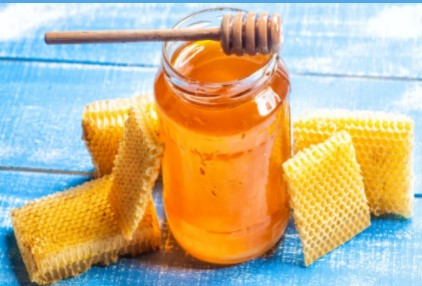News
The Dangers and Benefits of Raw Honey

There are about 320 different varieties of honey, which vary in color, odor and flavor. Honey contains mostly sugar, as well as a mix of amino acids, vitamins, minerals, iron, zinc and antioxidants. In addition to its use as a natural sweetener, honey is used as an anti-inflammatory, antioxidant and antibacterial agent. People commonly use honey orally to treat coughs and topically to treat burns and promote wound healing.
Throughout history and around the world, people have collected honey and used it both as a sweetener and medicinally. Modern honey connoisseurs describe varietals much in the same way a wine sommelier does, linking flavor attributes to its place of origin and the source of its nectar. From clover—the most common source of mass-produced honey—to wildflower, orange blossom, eucalyptus, sage, and tupelo, raw honey showcases its source.
By seeking out raw honey produced in small batches instead of large-scale production honey, you help honeybees by creating a financial incentive for beekeepers.
What Is Raw Honey?
The U.S. government does not officially define raw honey, but it's generally recognized as honey that exists as it did in the hive, without being filtered or pasteurized. Honey marketed as unpasteurized may or may not be filtered.
Honey, whether raw or pasteurized, naturally resists the growth of bacteria and other dangerous organisms because of its low moisture content and high acidity. However, yeast spores that naturally exist in the nectar used to produce honey can multiply and cause fermentation, which, while not dangerous, can affect the flavor. Some commercial producers choose to pasteurize their products, which kills any lingering yeast. It also keeps honey from crystallizing as quickly.
How to Use Raw Honey
Take advantage of raw honey's flavor by serving it simply, drizzled over plain yogurt or spread on whole grain toast. You can also use it in beverages, in a meat marinade or salad dressing, and generally in any application that calls for honey without distinguishing a variety. Just keep in mind that all honey burns easily.
Honey is likely safe for use as a natural sweetener, cough suppressant, and topical product for minor sores and wounds.
Avoid giving honey — even a tiny taste — to babies under the age of 1 year. Honey can cause a rare but serious gastrointestinal condition (infant botulism) caused by exposure to Clostridium botulinum spores. Bacteria from the spores can grow and multiply in a baby's intestines, producing a dangerous toxin.
Some people are sensitive or allergic to specific components in honey, particularly bee pollen. Although rare, bee pollen allergies can cause serious, and sometimes fatal, adverse reactions. Signs and symptoms of a reaction include:
Wheezing and other asthmatic symptoms
a. Dizziness
b. Nausea
c. Vomiting
d. Weakness
e. Excessive perspiration
f. Fainting
g. Irregular heart rhythms (arrhythmias)
h. Stinging after topical application
Honey might affect blood sugar levels.
CATEGORIES
LATEST NEWS
CONTACT US
Mobile:+86-18612182039
Tel:+86-029-85274126
Whatsapp:+8618612182039
Email:info@watarbio.com
Add:No. 12, Hongzhuan South Road, Yanta District, Xi’an 710061, China
